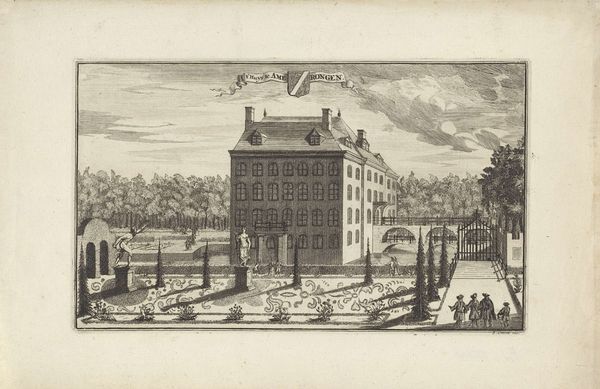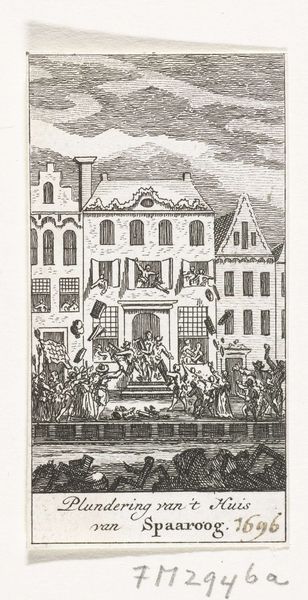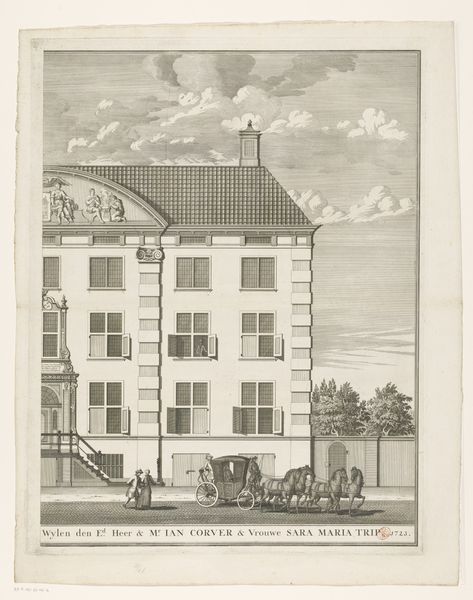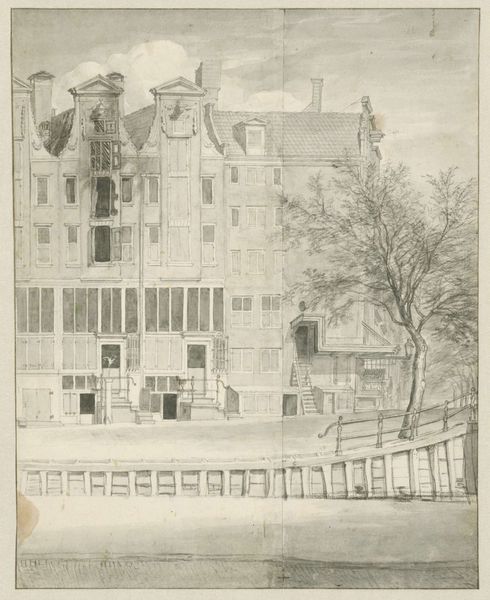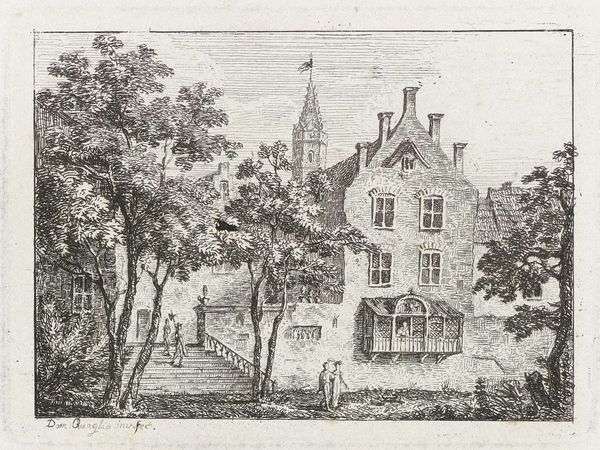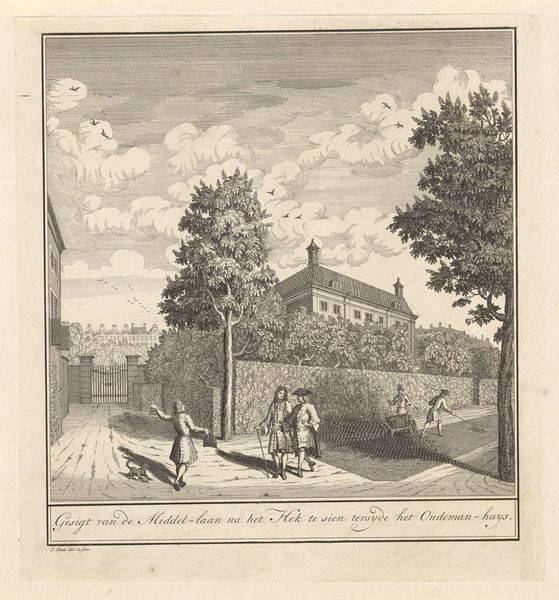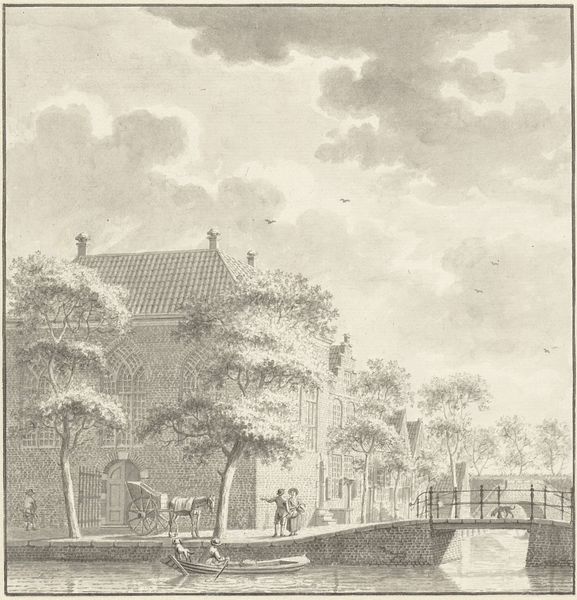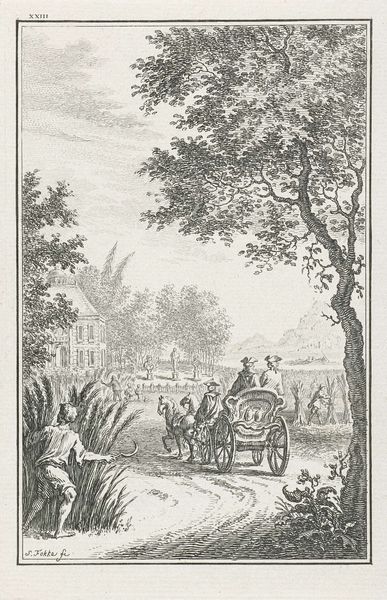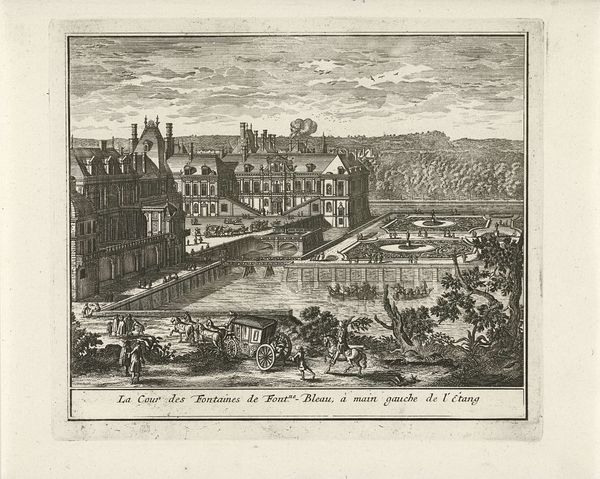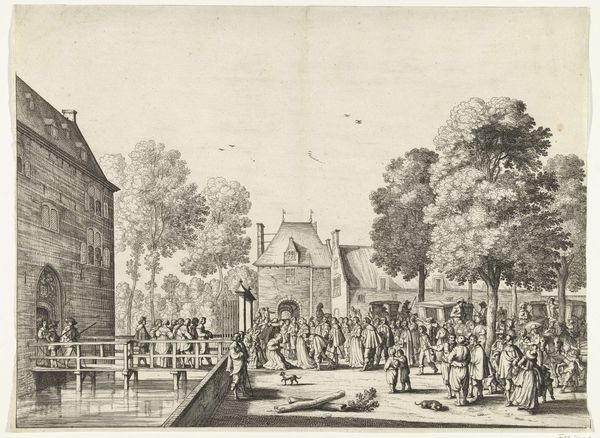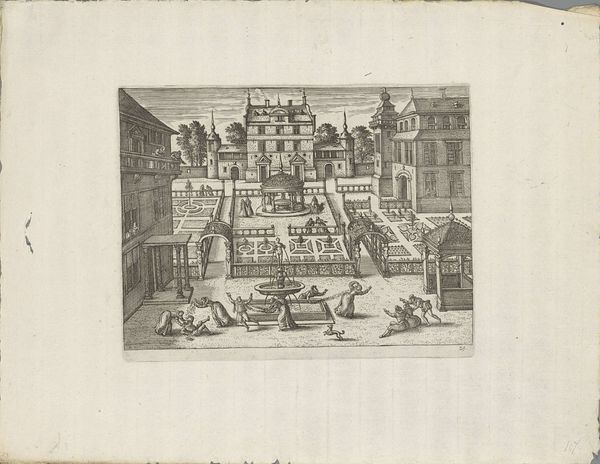
print, etching
#
dutch-golden-age
# print
#
etching
#
landscape
#
etching
#
cityscape
#
history-painting
Dimensions: height 354 mm, width 255 mm
Copyright: Rijks Museum: Open Domain
Joseph Mulder created this print in 1684, showing a burnt-out house on the Leidsegracht canal. But why make an artwork showing a destroyed home? In the Dutch Republic of the 17th century, cities like Amsterdam were booming economically and attracting people from all over Europe. Canals were crucial for transport and trade, but also a fire hazard, with houses packed closely together and many built of wood. Prints like this one served as a kind of early journalism, informing the public about significant events. But they also had a moral function. The orderly depiction of the scene, with people calmly assessing the damage, suggests a society that is resilient and well-governed. The print subtly reinforces the idea of Dutch society as one of order and reason, even in the face of disaster. To understand this image more fully, we might research the fire regulations of Amsterdam at the time, or look for other contemporary accounts of fires and their impact on the city. The history of art is always tied to the history of society.
Comments
No comments
Be the first to comment and join the conversation on the ultimate creative platform.
